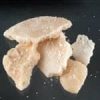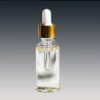How Does Alcohol Work?
Here is alcohol information on the way the body processes it. Alcohol is rapidly absorbed into the bloodstream by the small intestine and less quickly by the stomach and colon. In proportion to its concentration in the bloodstream, alcohol decreases activity in parts of the brain and spinal cord. The drinker’s blood alcohol concentration depends on:
- the amount consumed in a given time
- the drinker’s size, sex, body build, and metabolism
- the type and amount of food in the stomach.
In the average adult body, the rate of metabolism is about 8.5 g of alcohol per hour (i.e. about two-thirds of a regular beer or about 30 ml of spirits an hour). This rate is only a general guideline and can vary dramatically among individuals, depending on such diverse factors as usual amounts of drinking, physique, sex, and liver size.
Once the alcohol has passed from the digestive system into the bloodstream, no food or beverage can slow or interfere with its effects. However, in some cases, fruit sugar can shorten the duration of alcohol’s impact by speeding up its elimination from the blood.
Alcohol Information
Its Effects
Alcohol affects people differently. General effects are a feeling of warmth, flushed skin, impaired judgment, decreased inhibitions, muscular incoordination, slurred speech, and memory and comprehension loss. In states of extreme intoxication, vomiting is likely to occur, possibly accompanied by incontinence, poor respiration, a fall in blood pressure, and the case of severe alcohol poisoning, coma, and death.
Drinking heavily over a short period of time usually results in a “hangover” – headache, nausea, shakiness, and sometimes vomiting, beginning 8 to 12 hours later.
A hangover is due partly to poisoning by alcohol and other components of the drink and partly to the body’s reaction to withdrawal from alcohol. Long-term use of alcohol affects a person’s outlook on life.
Alcohol Information
Combination of Drugs & Alcohol
Combining alcohol with other drugs can make the effects of these other drugs much stronger and more dangerous. Many accidental deaths have occurred after people have used alcohol combined with other drugs. A person shouldn’t have cannabis, tranquillizers, barbiturates, sleeping pills, or antihistamines (in cold, cough, and allergy remedies) with alcohol.
People who drink regularly become tolerant to many of the unpleasant effects of alcohol and thus can drink more before suffering these effects. Yet even with increased consumption, many such drinkers don’t appear intoxicated.
Because they continue to work and socialize reasonably well, their deteriorating physical condition may go unrecognized by others until severe damage develops – or until they are hospitalized for other reasons and suddenly experience alcohol withdrawal symptoms.
Psychological Dependency
Psychological dependence on alcohol may occur with regular use of even relatively moderate daily amounts. It may also occur in people who consume alcohol only under certain conditions, such as before and during social occasions.
This form of dependence refers to a craving for alcohol’s psychological effects. Although not necessarily in amounts that produce serious intoxication. For psychologically dependent drinkers, the lack of alcohol makes them anxious and, in some cases, panicky.
Long-term alcohol abuse poses various health risks, such as liver damage and an increased risk for heart disease. Foetal Alcohol Syndrome may result from a pregnant woman’s drinking alcohol. This condition causes facial abnormalities in the child, as well as growth retardation and brain damage, which often is manifested by intellectual difficulties or behavioural problems.
Alcohol Information and the Right Rehab Centers
When does casual consumption of alcohol turn to dependency drinking or an “out of control” drinking? Alcohol is the most sinister of drugs. There is a thin line, usually imperceptible, between social use and addictive use.
Alcoholic dependent people rely on alcohol as a key component of their personality. Without a drink, they simply cannot “be themselves.” If this is the case, then checking into an alcohol treatment center would be the right thing to do. Life is possible without alcohol.
Do You Need Help?
If you are looking for an alcohol treatment center for someone with a drinking problem, we can help. We have contacts with drug and alcohol treatment centers servicing Canada. It is important to know that not all drug or alcohol rehabilitation methods are alike. There are some that will meet your specific needs and guarantee better success. Let us help you find the right alcohol rehab center and get you started on the road to recovery.
List of Drugs
REVIEWS

Carole Pelland
Substance Abuse
Digital Marketing Administrator
& Author


















